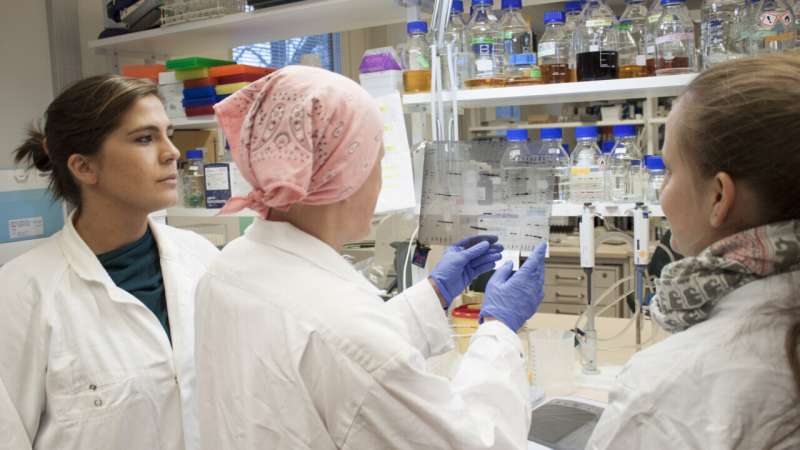This article has been reviewed according to Science X's editorial process and policies. Editors have highlighted the following attributes while ensuring the content's credibility:
fact-checked
trusted source
proofread
Examining how bacteria manipulates the immune response to spread unnoticed

Bacterial toxins have always been seen as dangerous molecules—but may also act as negotiators between bacteria and the host immune response to enable long-term infection. Anna Bergonzini, at the Department of Molecular Biology at Umeå University, defends her thesis on the subject on Friday, February 24.
Bacterial toxins are produced and released by bacteria causing illness. However, these weapons can also be exploited by the bacteria to manipulate the host immune response and to spread in an unperceived manner, which is their final goal.
In her research, Anna Bergonzini explores the specific circumstances in which genotoxins, a family of bacterial toxins that cause DNA damage in cells, are harmful and when they behave as negotiators.
Several studies support a role of this type of toxins in initiation and progression of gastro-intestinal tumors. Knowing whether that is the case, and understanding the underlying mechanisms, may result in specific and personalized therapeutic interventions as well as better strategies for disease prevention.
The toxicity varies
Nowadays the word "toxin" is being used loosely to mean poison/danger, as toxins are widely utilized in esthetic medical treatment and may also serve as medicines that are helpful in small doses, but poisonous in large amounts. This implies that the toxicity may vary depending on several factors, such as dose, the targeted organs, and general health status of the individuals.
While a functional genotoxin induces DNA damage and cellular aging, it also suppresses intestinal inflammation and reduces tissue damage—allowing the bacteria to invade the host in an unperceived manner.
The thesis' focus is the understanding of under which conditions the genotoxins destroy their target cells and when they, on contrary, become negotiators.
Development of 3D models
"My focus to address this question is the development of suitable laboratory models, such as cellular 3D models, which should resemble the natural intestinal environment. Current in vitro studies are conducted mainly in two-dimensional settings, which lack important microenvironmental structures and immune factors," says Anna Bergonzini.
The research team developed a 3D model by adding different cell types that are normally found in the intestine, and by creating different structures, mimicking a healthy gut vs. an inflamed gut.
"These models allow us to investigate in a greater detail how the genotoxins manipulate the immune response, and they can provide valuable insights to the molecular basis of the host response to enteric pathogens" says Anna Bergonzini.
More information: Thesis: umu.diva-portal.org/smash/record.jsf?pid=diva2%3A1730091&dswid=9332
Provided by Umea University



















